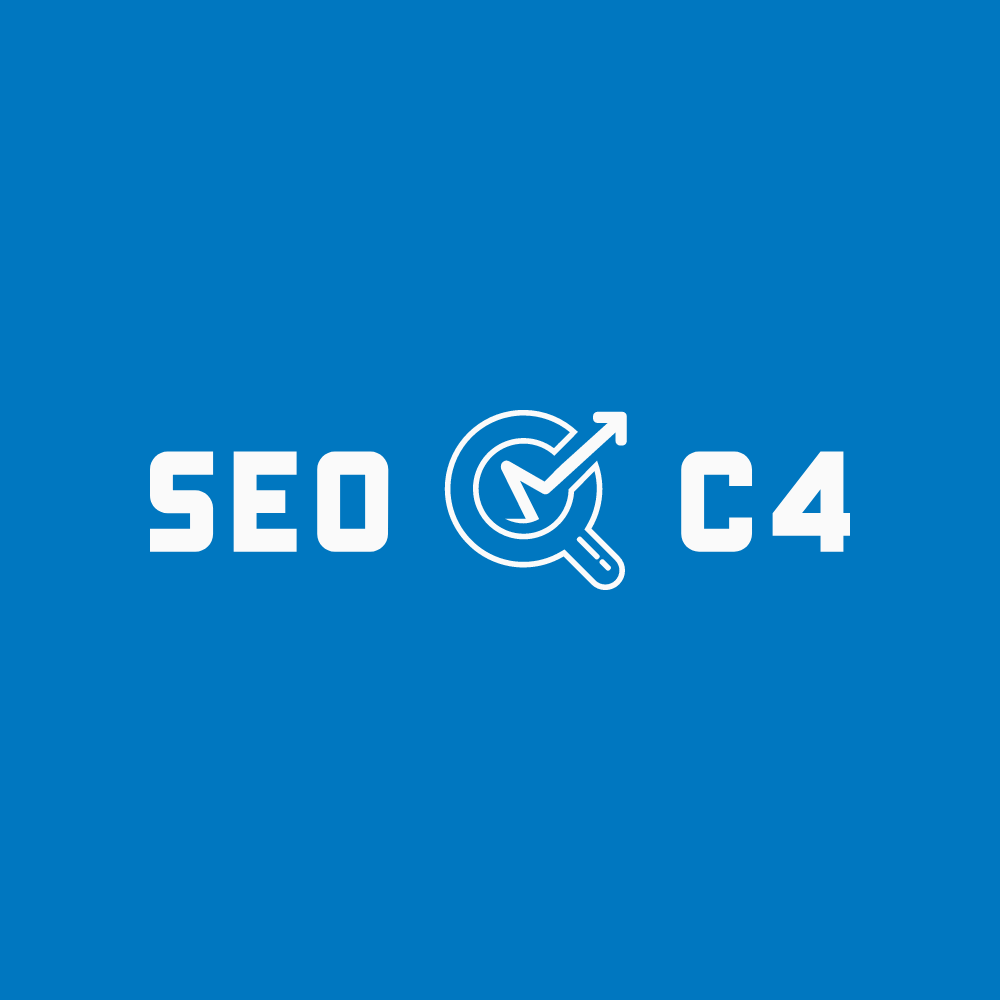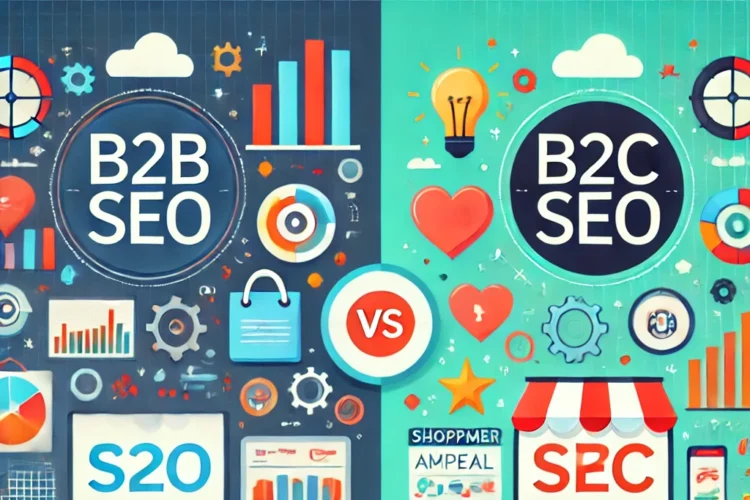
In the competitive world of B2B (business-to-business) marketing, SEO (search engine optimization) is a critical strategy for gaining visibility, generating leads, and ultimately driving sales. A well-executed SEO campaign can position your company as an industry leader, but developing a winning B2B SEO strategy requires a specific approach, different from B2C (business-to-consumer) tactics.
This blog will guide you through the key steps to create a successful B2B SEO campaign that attracts qualified traffic and converts that traffic into valuable leads.
1. Understand the B2B Audience and Their Search Intent
B2B SEO is fundamentally different from B2C because the decision-making process in B2B is more complex. B2B buyers are often informed, seeking solutions to specific problems, and evaluating multiple vendors over a long buying cycle.
Key Considerations:
- Targeting Decision-Makers: In B2B, the audience includes decision-makers like managers, directors, and executives. Your content needs to speak to their pain points, business challenges, and long-term goals.
- Research-Based Intent: B2B buyers often conduct in-depth research before making purchasing decisions. Your SEO strategy must be designed to capture high-quality leads at every stage of their buyer’s journey, from awareness to consideration to decision.
How to Apply:
- Create Detailed Buyer Personas: Define who your ideal customers are. What are their titles? What challenges are they facing? What type of content do they engage with? This will help you craft content that resonates with them.
- Map Content to Search Intent: Understand the search intent behind keywords. Are buyers searching for educational content, product comparisons, or pricing information? Use this insight to tailor your content and keyword strategy.
2. Perform Comprehensive Keyword Research
Keyword research is the backbone of any SEO campaign, but for B2B, it requires a deeper understanding of industry-specific terms and phrases.
Key Considerations:
- Long-Tail Keywords: B2B queries tend to be more specific, often involving longer search terms. For example, instead of “CRM software,” a B2B query might be “best CRM software for small businesses.”
- Industry Jargon: B2B audiences often use technical language and industry jargon in their searches. Including these terms in your content helps establish authority and relevance.
How to Apply:
- Use Keyword Research Tools: Tools like Google Keyword Planner, Ahrefs, SEMrush, and Moz can help you identify the best keywords. Focus on long-tail keywords with lower competition but high relevance.
- Competitor Analysis: Analyze the keywords your competitors are ranking for. Look for gaps in their strategy that you can exploit with better, more in-depth content.
3. Create High-Quality, Relevant Content
Content is a core component of B2B SEO. Your content must address the pain points of your target audience, provide actionable insights, and establish your brand as a trusted resource.
Key Considerations:
- Educational Content: B2B buyers are looking for content that educates them. Blog posts, whitepapers, case studies, and eBooks that offer in-depth analysis of industry issues or product solutions are valuable.
- Product-Specific Content: Detailed product pages, use cases, and customer testimonials help B2B buyers understand how your product or service can solve their problems.
- Thought Leadership: Establishing your brand as an industry leader requires publishing authoritative content that offers unique perspectives or data-backed insights.
How to Apply:
- Content Mapping: Create a content strategy that aligns with each stage of the buyer’s journey—awareness, consideration, and decision. For example:
- Awareness Stage: Blog posts, industry reports, and how-to guides.
- Consideration Stage: Webinars, case studies, product comparisons.
- Decision Stage: Product pages, testimonials, free trials, demos.
- Long-Form Content: Focus on creating long-form, detailed content (1,500-2,500 words) that thoroughly addresses the searcher’s needs. Long-form content tends to rank better and attracts more backlinks.
4. Optimize for On-Page SEO
On-page SEO involves optimizing individual pages to rank higher and earn more relevant traffic. It’s a crucial part of any B2B SEO campaign.
Key Considerations:
- Title Tags & Meta Descriptions: These elements tell search engines and users what your page is about. Make sure they include relevant keywords and provide clear value propositions.
- Headers & Subheadings: Use H1, H2, and H3 tags to structure your content. Search engines use these tags to understand the hierarchy and flow of the content.
- URL Structure: Keep URLs concise and keyword-rich. For example, instead of “/product-12345,” use “/best-crm-software.”
- Internal Linking: Link to other relevant pages on your site. This helps users discover more content and also boosts your site’s SEO by distributing link equity.
How to Apply:
- Keyword Placement: Use primary and secondary keywords in strategic places like the title, headings, and throughout the body. Avoid keyword stuffing—make sure the content reads naturally.
- Optimized Images: Use descriptive file names and alt text for images. Compress images to ensure fast loading speeds.
- Schema Markup: Add structured data (schema) to help search engines better understand the content on your site, which can lead to rich snippets and improved rankings.
5. Build High-Quality Backlinks
Backlinks are one of the most important ranking factors in SEO. For B2B websites, securing backlinks from authoritative, industry-relevant sites signals to search engines that your content is trustworthy and valuable.
Key Considerations:
- Industry-Relevant Links: Focus on earning backlinks from industry-specific websites, blogs, and publications. These links carry more weight than generic ones.
- Guest Blogging & Thought Leadership: Writing guest posts on industry blogs or contributing to relevant online publications can help you build backlinks and establish thought leadership.
How to Apply:
- Outreach Strategy: Reach out to industry influencers, bloggers, and publications to promote your content. Focus on creating relationships, not just asking for links.
- Content Partnerships: Collaborate with other companies for co-branded content, such as whitepapers or webinars, to earn high-quality backlinks.
- Broken Link Building: Identify broken links on authoritative websites and suggest replacing them with links to your relevant content.
6. Prioritize Technical SEO
Technical SEO ensures that your website is easily crawlable, indexable, and fast, all of which are critical for ranking well in search results.
Key Considerations:
- Site Speed: B2B buyers are often pressed for time. A slow website can lead to higher bounce rates and negatively impact your SEO.
- Mobile Optimization: With Google’s mobile-first indexing, it’s essential that your website is fully responsive and provides a seamless experience on all devices.
- Crawlability & Indexing: Make sure search engines can easily crawl and index your site. A clean sitemap and internal linking structure help achieve this.
How to Apply:
- Site Speed Optimization: Compress images, leverage browser caching, and reduce server response times. Tools like Google PageSpeed Insights can help identify areas for improvement.
- Mobile-Friendly Design: Test your site across various devices to ensure it’s mobile-friendly. Make use of Google’s Mobile-Friendly Test tool.
- Fix Broken Links & Redirects: Regularly audit your site for broken links or incorrect redirects, which can hurt both user experience and SEO.
7. Measure and Adjust Your Strategy
No SEO campaign is static. The best strategies are dynamic and adapt to changes in search algorithms, market trends, and user behavior.
Key Considerations:
- Track Key Metrics: Monitor important KPIs such as organic traffic, keyword rankings, bounce rates, conversion rates, and time on site. Use tools like Google Analytics, Search Console, and SEMrush for insights.
- Adjust Based on Data: If a particular keyword isn’t performing well, consider revisiting your content or finding new, more relevant keywords to target.
- Test and Iterate: Continuously A/B test elements like title tags, meta descriptions, and content layout to improve engagement and rankings.
How to Apply:
- Regular Audits: Conduct regular SEO audits to ensure your site is up to date with best practices. This includes checking for broken links, optimizing metadata, and ensuring site speed is optimal.
- Track ROI: For B2B, lead generation is a key metric of success. Measure the number and quality of leads generated from organic search and optimize your strategy based on the data.
Conclusion: Building a Winning B2B SEO Campaign
Creating a successful B2B SEO campaign requires a deep understanding of your target audience, strategic keyword research, high-quality content, and a commitment to ongoing optimization. By focusing on the unique challenges of B2B buyers, optimizing your website’s technical performance, and building authoritative backlinks, you can position your business as a leader in the industry and drive sustainable growth through organic search.
A well-planned and executed B2B SEO campaign can be the key to unlocking significant traffic, leads, and sales for your business. By following these steps and continuously refining your strategy, you’ll be well on your way to creating a winning B2B SEO campaign.
Read More
Facebook Ads Case Studies
Tried & Tested Winning FB Ads Strategy [E-COMMERCE]
The Simple Guide to Keyword Research with Examples
Brief Step by Step Guides To Boost Your Off Page
276 Marketing Terms You Need To Know In The Digital Marketing




